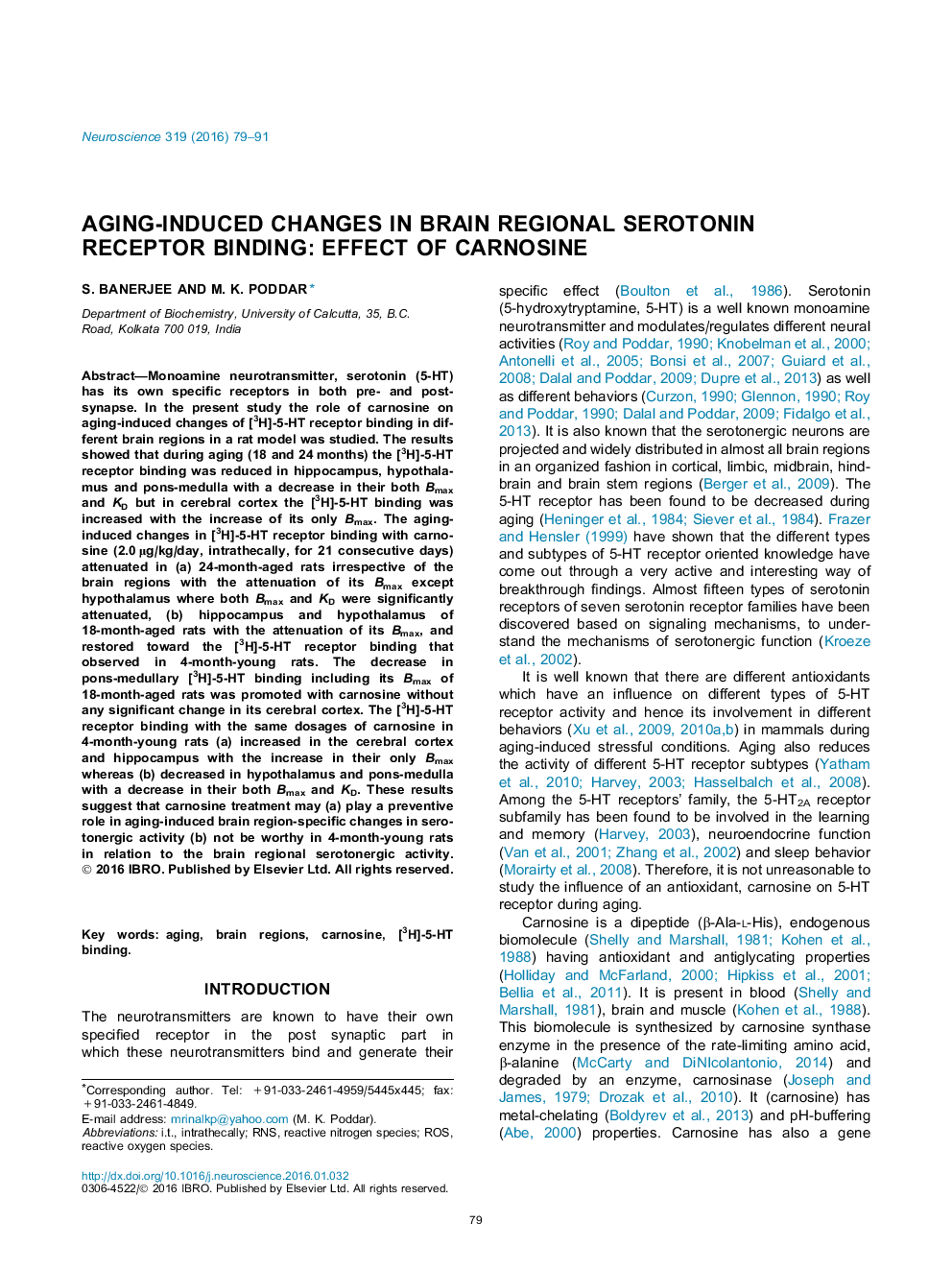| Article ID | Journal | Published Year | Pages | File Type |
|---|---|---|---|---|
| 6271362 | Neuroscience | 2016 | 13 Pages |
Abstract
Monoamine neurotransmitter, serotonin (5-HT) has its own specific receptors in both pre- and post-synapse. In the present study the role of carnosine on aging-induced changes of [3H]-5-HT receptor binding in different brain regions in a rat model was studied. The results showed that during aging (18 and 24 months) the [3H]-5-HT receptor binding was reduced in hippocampus, hypothalamus and pons-medulla with a decrease in their both Bmax and KD but in cerebral cortex the [3H]-5-HT binding was increased with the increase of its only Bmax. The aging-induced changes in [3H]-5-HT receptor binding with carnosine (2.0 μg/kg/day, intrathecally, for 21 consecutive days) attenuated in (a) 24-month-aged rats irrespective of the brain regions with the attenuation of its Bmax except hypothalamus where both Bmax and KD were significantly attenuated, (b) hippocampus and hypothalamus of 18-month-aged rats with the attenuation of its Bmax, and restored toward the [3H]-5-HT receptor binding that observed in 4-month-young rats. The decrease in pons-medullary [3H]-5-HT binding including its Bmax of 18-month-aged rats was promoted with carnosine without any significant change in its cerebral cortex. The [3H]-5-HT receptor binding with the same dosages of carnosine in 4-month-young rats (a) increased in the cerebral cortex and hippocampus with the increase in their only Bmax whereas (b) decreased in hypothalamus and pons-medulla with a decrease in their both Bmax and KD. These results suggest that carnosine treatment may (a) play a preventive role in aging-induced brain region-specific changes in serotonergic activity (b) not be worthy in 4-month-young rats in relation to the brain regional serotonergic activity.
Keywords
Related Topics
Life Sciences
Neuroscience
Neuroscience (General)
Authors
S. Banerjee, M.K. Poddar,
